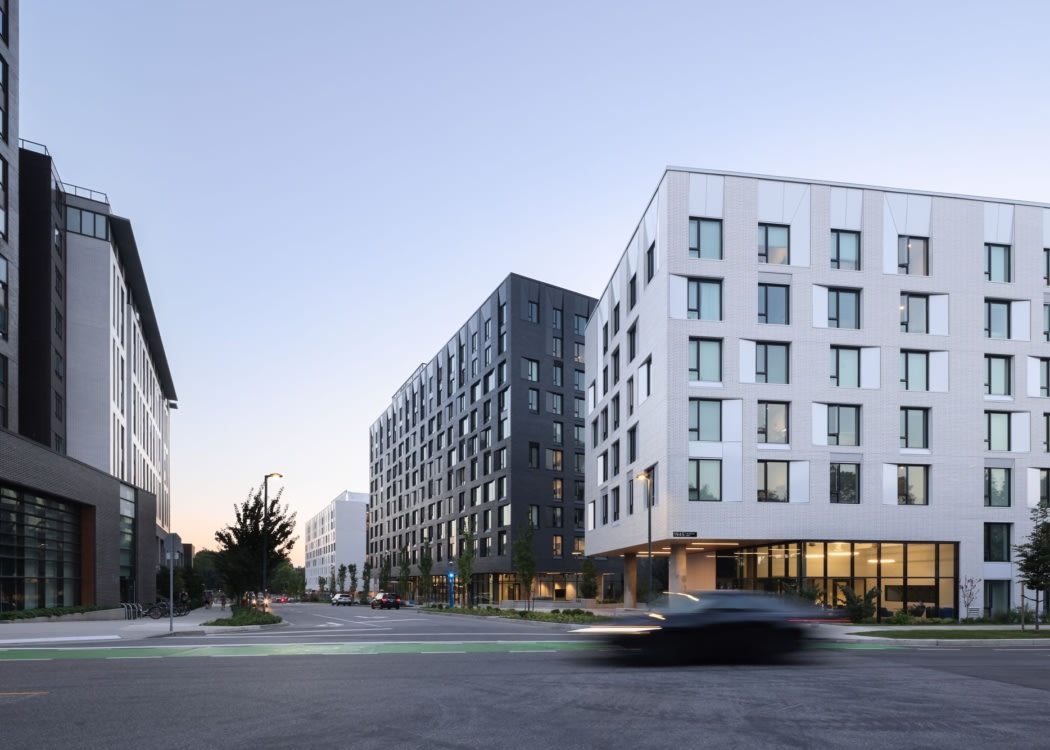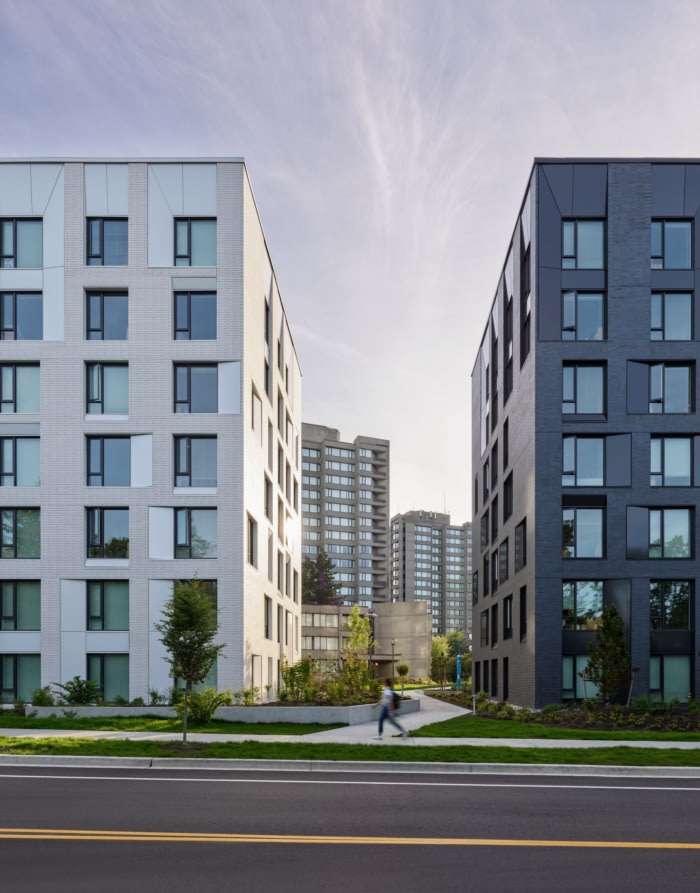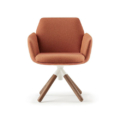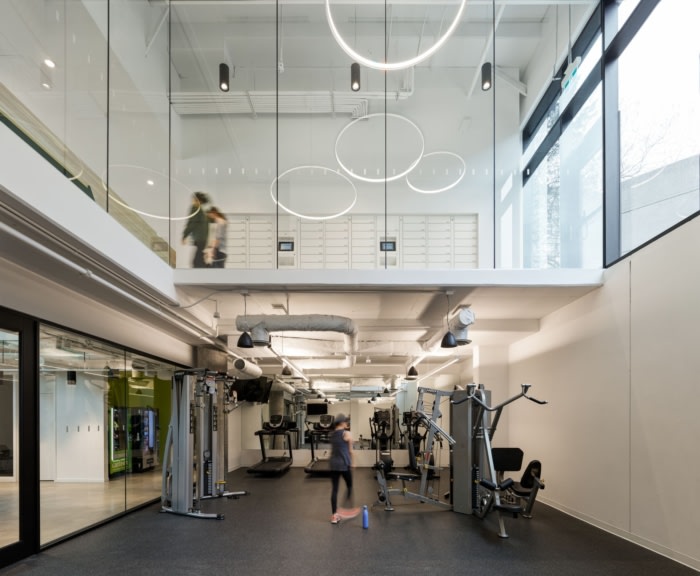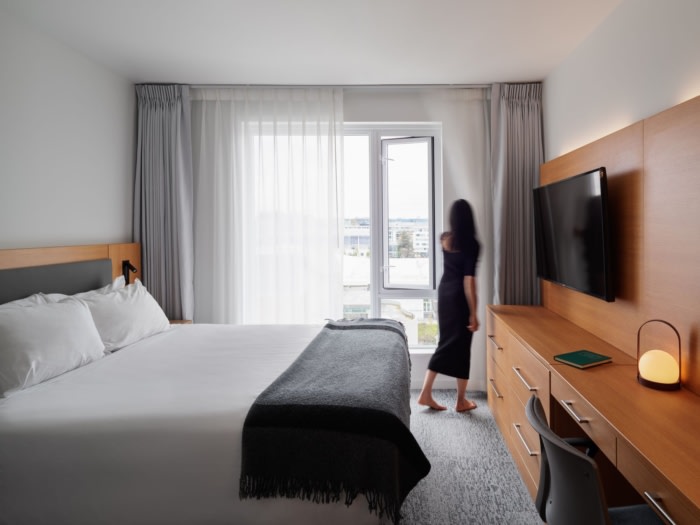University of British Columbia – Saltwater Residence
Ryder Architecture and Hotson Architecture designed the Saltwater Residence for the University of British Columbia in Vancouver, Canada.
The long-term effects of the global pandemic over the past two years have deeply reinforced the importance of community, health and wellness. These effects are especially true at university campuses across North America, where the need for a safe and active social life plays an integral role in the personal growth and mental health of university students.
Ryder Architecture and Hotson Architecture, in collaboration, recently designed The Houses of the Ones Belonging to the Saltwater, a series of five student residences at the University of British Columbia (UBC), a campus sited on an idyllic peninsula at the western edge of Vancouver, British Columbia. The project addresses the importance of student wellness, inclusivity, and sustainable design through its dynamic programming, visual transparency and context-responsive materiality.
Although considered an infill project, the seven- to ten-storey buildings are in a prime location near the central bus loop, which provides a vital link between Vancouver and this campus of over 58,000 students, with approximately 13,000 students currently living on campus. A lack of affordable off-campus student rentals in Vancouver makes these nearly 1,000 beds a desirable alternative for students. The new residences opened its doors for the first time during the 2021-2022 academic year after the global pandemic caused an 18-month period of upheaval and disruption that essentially shut down on-campus student life. The residences offer students a host of amenities while supporting a vibrant academic and social community life emphasizing livability and affordability.
The Musqueam Indian Band generously bestowed the names to UBC in their hən̓q̓əmin̓əm̓ language as a gift in spring 2021. The buildings are stitched together with understated landscape architecture, creating an urban streetscape along Student Union Boulevard adjacent to the bus loop, ensuring a high degree of site safety, visibility and accessibility. Active ground-level student amenities support a dynamic and welcoming street presence. These shared student spaces—often double-height and always filled with plenty of natural daylight—include lounges, study areas, fitness, music and dance studios, as well as “front desk” administrative offices. These shared spaces collectively activate a vibrant and connected campus community, offering numerous opportunities for both formal and informal social gatherings. Living arrangements include a mix of four-bedroom and studio apartments that provide upper-year students with suites equipped with individual bathrooms and shared functional kitchens.
The material palette and consistent formal language of these mid-rise buildings enable the massing of this string of residences to be broken down into individual blocks that facilitate visual and pedestrian connections to the campus, including the adjacent Walter Gage Residence precinct.
Ground floor conditions encourage connectivity through visual transparency, such as exterior wood soffits, which transition into interior ceiling treatments. Entries and communal spaces are “carved” from each building mass with recesses and cantilevers. The highly insulated wall assembly provides an opportunity to express a greater sense of depth within the façade through angled metal accent panels that frame and accentuate the often-irregular fenestration pattern. This approach creates a unique and delightful effect that stretches the scale and expression of each building’s facade. The white and dark ironspot brick cladding of the curtain walls takes its cues from the materiality of existing brick buildings on campus while reinforcing a familiar residential quality. The choice of white and dark brick dramatically reflects light depending on the weather and time of day. This effect is of particular delight to students and passersby since it captures even the slightest change in local light conditions, which are often overcast and rainy, given Vancouver’s West Coast climate.
Design: Ryder Architecture and Hotson Architecture
Photography: Ema Peter, Adrien Williams

